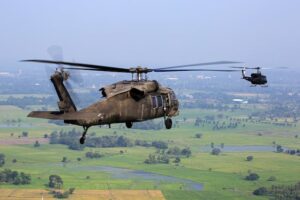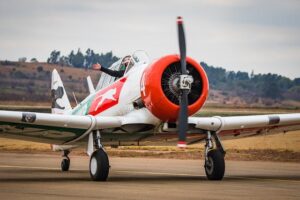 Air turbulence, although a common experience in air travel, can often cause restlessness and nervousness among passengers. But what exactly is turbulence, and why does it occur? In which part of the plane is the most noticeable? Can aplane crash due to severe turbulence?
Air turbulence, although a common experience in air travel, can often cause restlessness and nervousness among passengers. But what exactly is turbulence, and why does it occur? In which part of the plane is the most noticeable? Can aplane crash due to severe turbulence?
Join us in this post and discover why turbulence is a natural and safe aviation phenomenon.
What Is Turbulence?
We call turbulence the changes in attitude and altitude of an aeroplane caused by the variation in the direction and speed of the air it is flying.
Although they can be disconcerting, it is important to understand that aeroplane turbulence is a normal part of air travel. And, like potholes on the road, turbulence is something that pilots and airlines are prepared to deal with.
What Causes Them?
The million-dollar question: Why does turbulence occur? The main cause of turbulence is the weather. These include clouds, mountain waves, possible storms or storms, normal air currents, and high-speed air currents or jet streams. About the latter, you can read more in our post about the Coriolis effect.
In addition, construction and terrain around airports can also cause turbulence. As? Well, because the wind, which usually travels straight, collides with buildings and changes its direction, and, in this way, turbulence occurs when the aircraft passes through that mass of “scrambled air.”
And have you ever wondered why there should be a minimum separation between planes that are flying? The answer is to avoid turbulence.
Coming into contact with the wake of a preceding aircraft can cause turbulence, which is why it is important to respect the minimum distances between aircraft.
If you are interested in the topic, we have a whole post about aircraft wake turbulence. I’m sure you’ll love it!
 Investment In The Aviation Industry’s Lower Carbon Future Must Be Linked To The Worker-Led Transition.
Investment In The Aviation Industry’s Lower Carbon Future Must Be Linked To The Worker-Led Transition.
COP28, Dubai, United Arab Emirates – On International Civil Aviation Day, the International Transport Workers’ Federation (ITF) is today calling on governments the world over to implement subsidies and incentive programs to ramp up the production of sustainable aviation fuels (SAF) to ensure the industry meets its decarbonization targets and enable it to focus on upskilling and retaining staff as part of a just transition to a sustainable future.
“Right now, airlines are trying to stimulate SAF production by creating confidence in demand through offtake agreements for future production,” said ITF Assistant General Secretary Rob Johnston, speaking at COP28 in Dubai. “But the simple truth is that’s not enough. There’s still not enough SAF to go around, it’s not being produced fast enough, and what little is being produced is anywhere from two to ten times more expensive than traditional jet fuel.”
“Governments are needed to drive action at scale, to incentivize production to make SAF more available and more affordable so the industry can meet its targets and start active planning to certify, train and retain staff.”
“The aviation industry is in the spotlight at COP28. We are seeing increasing calls for a new carbon tax on aviation to help bridge the global climate finance gap. We accept that aviation must pay its fair share towards the transition, but there must be robust conditions to ensure that any new measures deliver a just transition,” said Johnston.
Producing and utilizing SAF will require a highly skilled workforce, and as there are several types of SAF and SAF pathways, the training and licensing of engineers and associated workers could be equally diverse.
